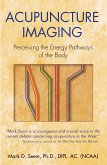The willingness to care for those who are in some way disabled is widely regarded as one of the characteristics that define what it is to be human (Gould 1988; Green 2003). Experience of disease is a constant of our existence, and the provision of health-related care appears to be such a universal and well-established response that some have even claimed an evolved genetic component for this practice (Fabrega 1997, 2011; Hill et al 2009; Sugiyama 2004a). In archaeology, healthcare provision is inferred from physical evidence in a set of human remains indicating survival with, or recovery from, a disabling pathology in circumstances where, without such support, the individual may not have survived to actual age at death. However, while there is a rich literature documenting individual examples of serious pathology, including reports in which the likelihood of care is explicitly acknowledged, although not elaborated ( see, for example, Dickel and Doran 1989; Hawkey 1998; Luna et al 2008; Trinkaus and Zimmerman 1982), and exploring interactions between the evolution of disease, social and environmental variables, and population health status (e.g. Larsen 2000; Roberts and Manchester 2005; Steckel and Rose 2002a,b ), archaeology has largely overlooked health-related caregiving as a specific focus of analysis.








